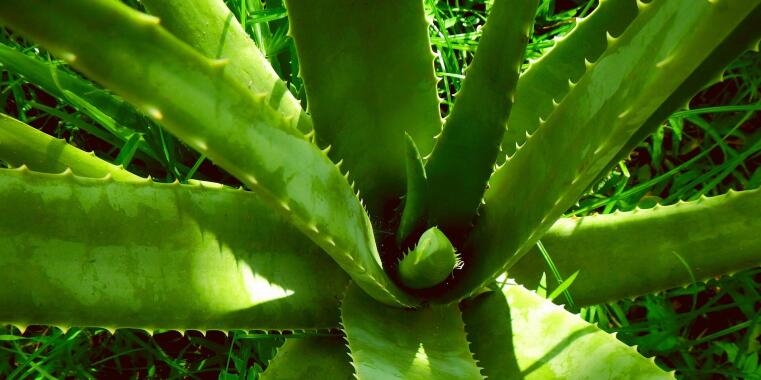

botanical background
order: Asparagales
family: Xanthorrhoeaceae
genus: Aloe
species: Aloe vera
attributes: plant without trunk, flehsy leaves with rosettes, yellow blossoms, grows in groups
origin: Arabian peninsula
habitat: subtropic and tropic regions (cultivaed), e.g. Mediterranean, India or Mexico
in the Bible
And Nicodemus also came, who at the first came to Jesus by night, and brought a mixture of myrrh and aloes, about a hundred pounds. Then they took the body of Jesus and wound it with linens with the spices, as is the custom of the Jews to bury. 41 And in the place where He was crucified there was a garden, and in the garden a new tomb in which no one yet had been placed. 42 There, then, because of the Preparation of the Jews, because the tomb was near, they laid Jesus.
John 19,39-42
Two different biblical plants are identified with aloe – Aquilaria agallocha, Hebrew אֲהָלִים / אֲהָלוֹת ’ǎhālôt / ’ǎhālîm and the aloe plant, which is used according to the New Testament as a remedy or to embalm the dead. Aquilaria agallocha is often named alongside myrrh, cassia and other spices (Ps 45,9; Spr 7,17; Hhld 4,14), which hints at it‘s spicy scent.
mentions: several
other text passages (selected):
Numbers 24,6
Psalms 45, 9
Proverbs 7,17
Song of Songs 4,14
John 19,39
Sources
Neumann-Gorsolke, Ute: Aloe, in: Das wissenschaftliche Bibellexikon im Internet (Sept. 2006), URL: https://www.bibelwissenschaft.de/wibilex/das-bibellexikon/lexikon/sachwort/anzeigen/details/aloe-2/ch/e3cd1f95cc587d48ff9fc1af579f4540/ (abgerufen am 01.05.2023).
Modern King James Version.



